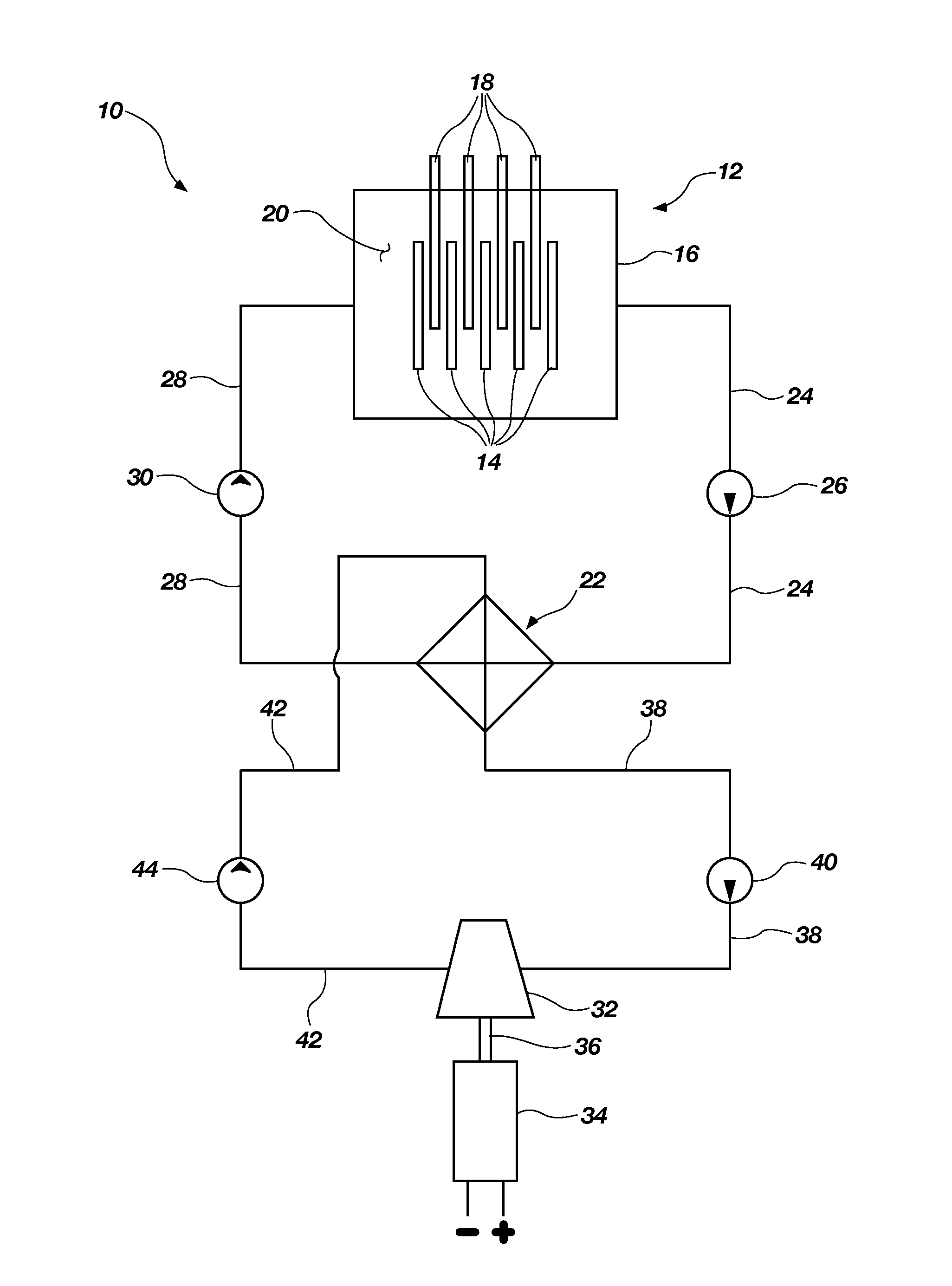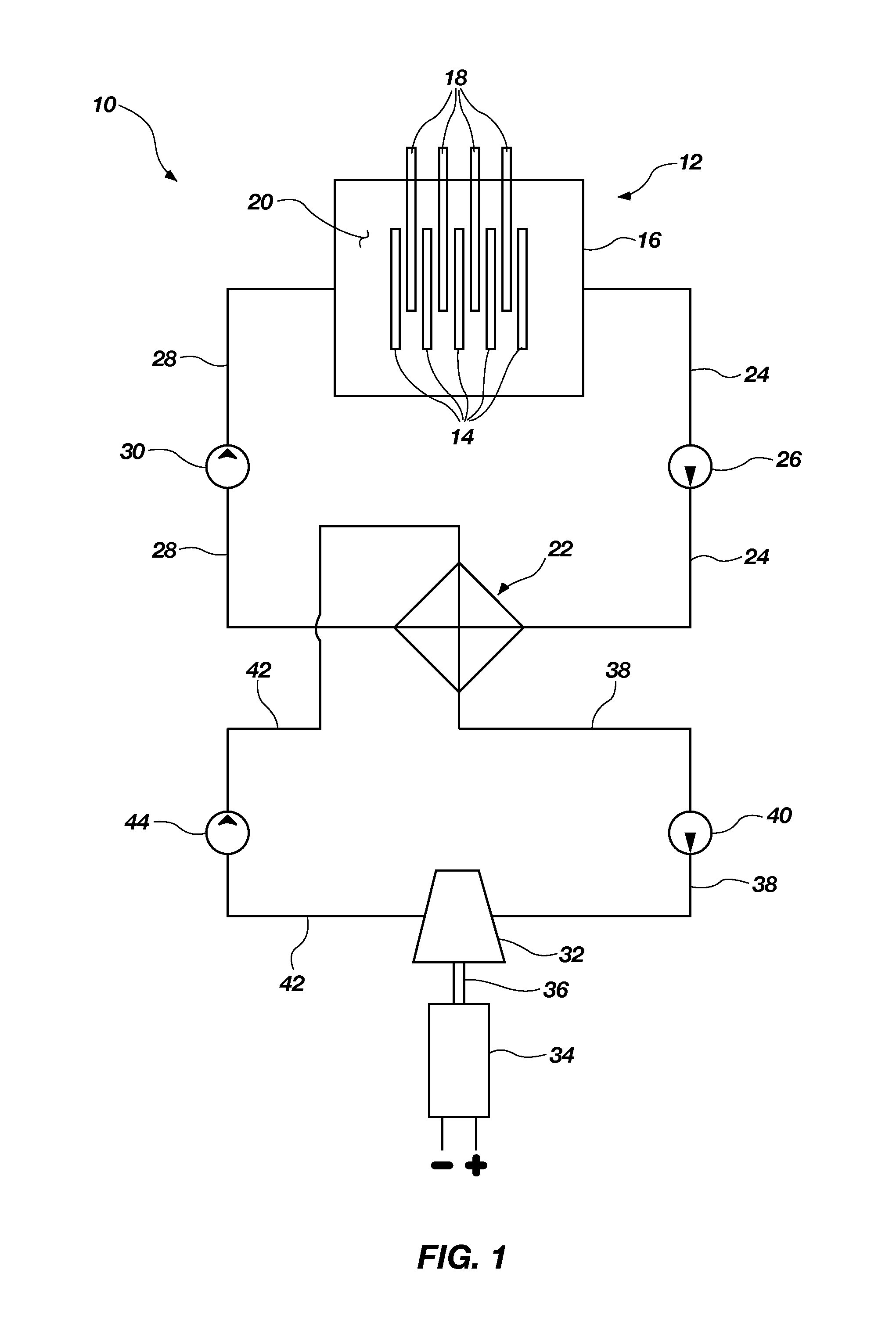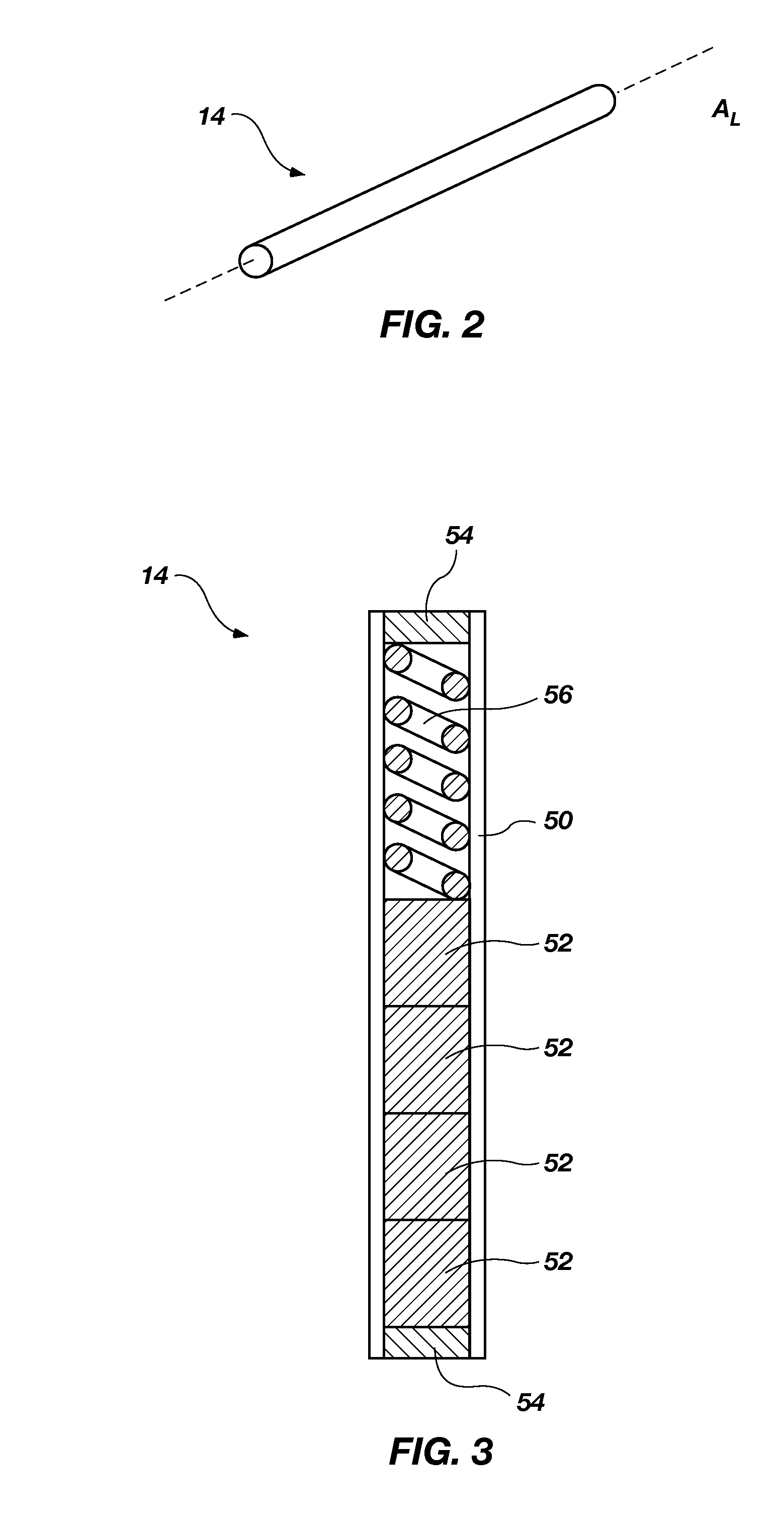Zirconium-based alloys, nuclear fuel rods and nuclear reactors including such alloys, and related methods
a technology of zirconium-based alloys and nuclear fuel rods, which is applied in the direction of greenhouse gas reduction, distance measurement, instruments, etc., can solve the problems of hydrogen embrittlement and failure of cladding materials
- Summary
- Abstract
- Description
- Claims
- Application Information
AI Technical Summary
Benefits of technology
Problems solved by technology
Method used
Image
Examples
Embodiment Construction
[0018]FIG. 1 is a simplified schematic diagram illustrating an example embodiment of a nuclear reactor 10 of the disclosure, which includes a zirconium-based metal alloy composition, as described in further detail below, in nuclear fuel rods 14 employed in the nuclear reactor 10. The nuclear reactor 10 includes a reactor core 12 that includes the fuel rods 14, which are located within a chamber 16. The fuel rods 14 may be elongated and oriented at least substantially parallel to one another in an ordered array. The fuel rods 14 include a cladding comprising a zirconium-based metal alloy composition as described herein. The cladding may at least partially surround bodies of nuclear fuel material. Nuclear reactions that generate thermal energy may be carried out in the bodies of nuclear fuel within the fuel rods 14. The reactor core 12 also includes control rods 18 that may be positioned between the fuel rods 14 for controlling the nuclear reactions carried out within the fuel rods 14...
PUM
| Property | Measurement | Unit |
|---|---|---|
| temperature | aaaaa | aaaaa |
| grain size | aaaaa | aaaaa |
| grain size | aaaaa | aaaaa |
Abstract
Description
Claims
Application Information
 Login to View More
Login to View More - R&D
- Intellectual Property
- Life Sciences
- Materials
- Tech Scout
- Unparalleled Data Quality
- Higher Quality Content
- 60% Fewer Hallucinations
Browse by: Latest US Patents, China's latest patents, Technical Efficacy Thesaurus, Application Domain, Technology Topic, Popular Technical Reports.
© 2025 PatSnap. All rights reserved.Legal|Privacy policy|Modern Slavery Act Transparency Statement|Sitemap|About US| Contact US: help@patsnap.com



